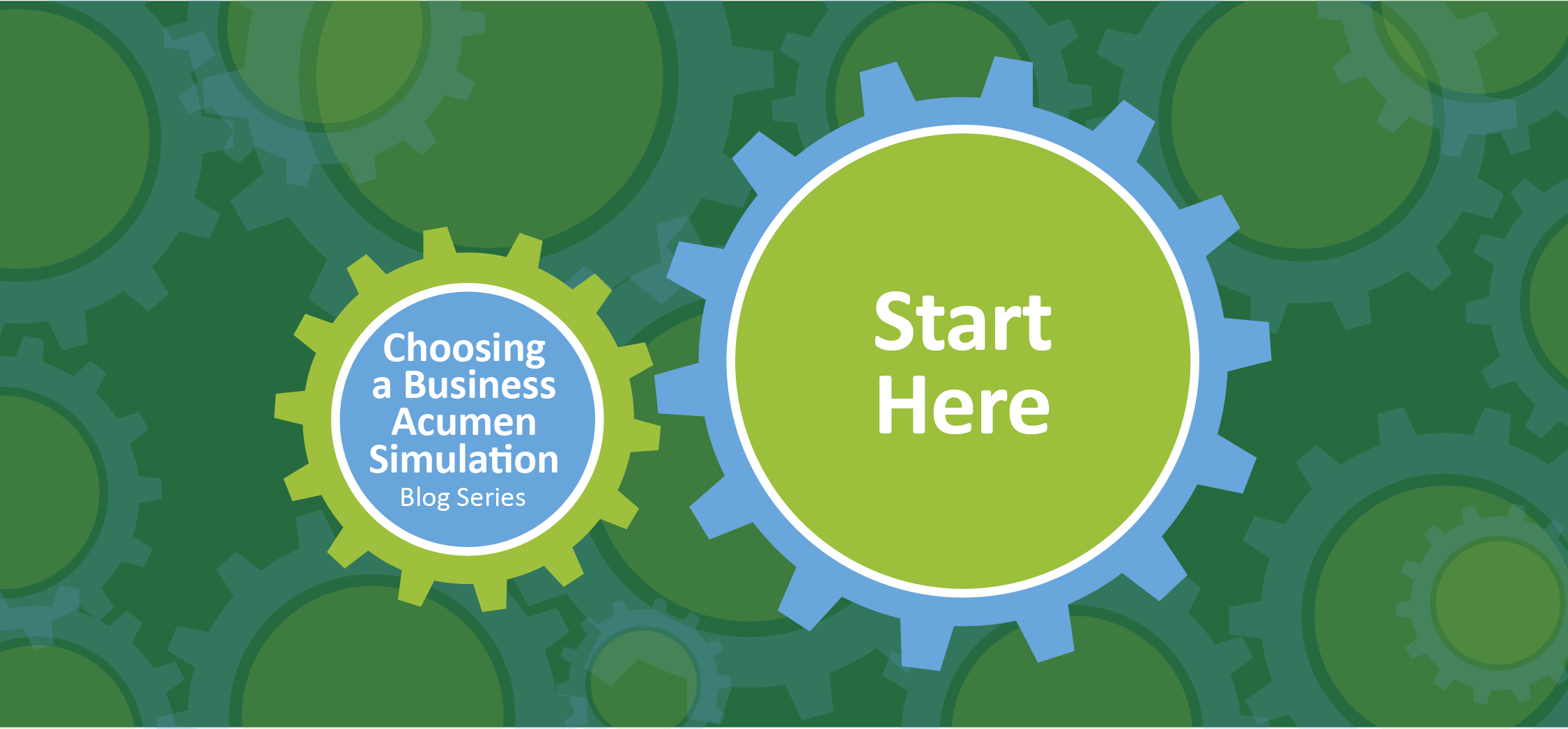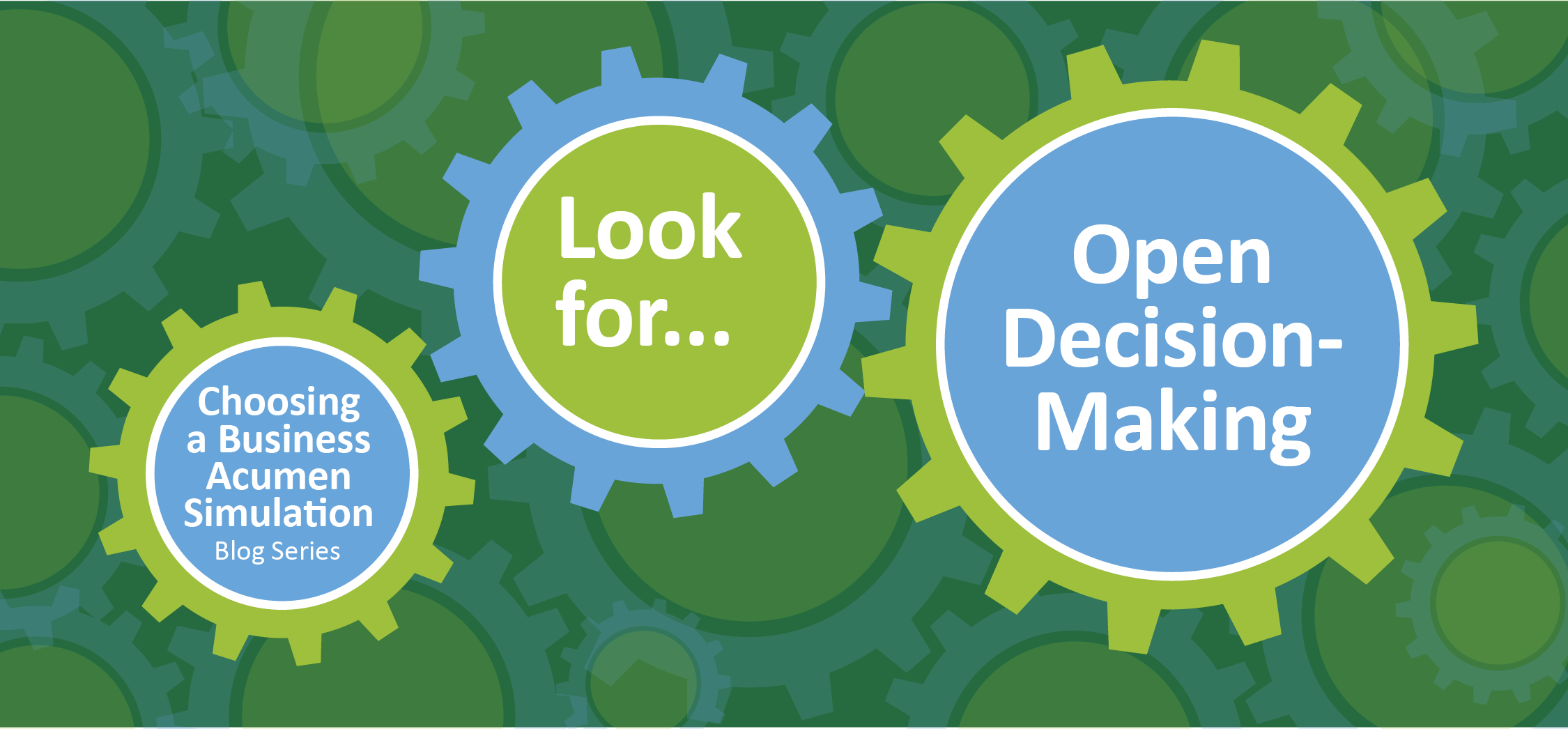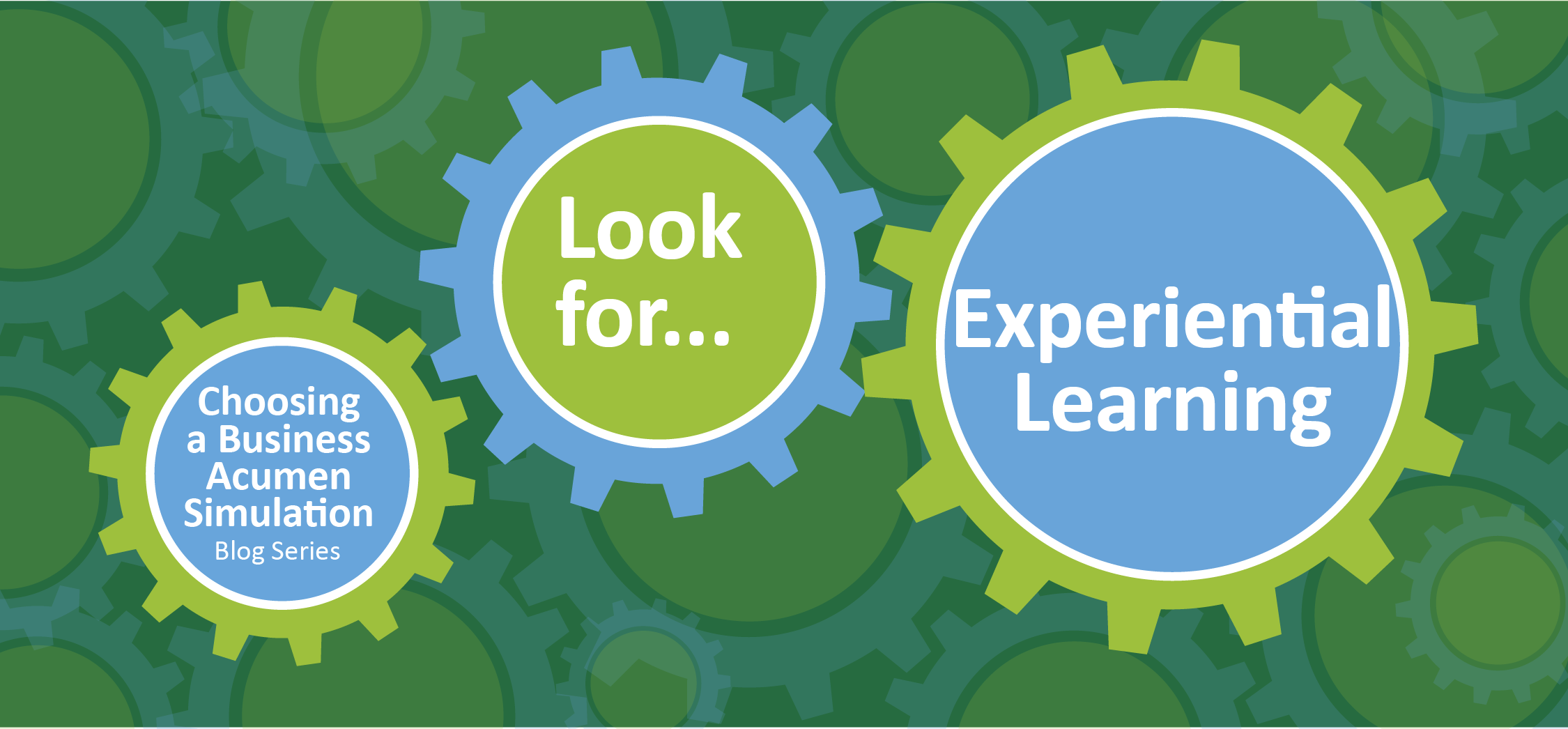Why Use Simulations?
If you’re investing in business acumen training, the right simulation can deliver lasting business insight. The wrong one can be a waste of time, money, and credibility.
So why use a simulation at all? Why not just use books, lectures, or e-learning? Because people learn by doing—and they learn even more with practice.
A business simulation gives them both. It offers a way to test ideas, experience outcomes, and refine decisions. This kind of active learning helps people internalize how the business works. It builds confidence. And it sticks.
Simulations let learners wrestle with complexity. They link cause and effect. They give participants a safe space to make decisions, learn from them, and try again. That kind of learning shows up later—in meetings, in budgets, in strategy sessions.
Business acumen can’t be memorized. It has to be experienced.
What This Series Covers
This blog series is your guide to choosing the best business acumen simulation for your people, your culture, and your goals.
Across 12 core posts—plus bonus chapters on AI, ROI, and next steps—you’ll explore the design elements that matter most. Each chapter highlights one design pitfall to avoid and one principle to look for.
- Choose simulations that engage people through action—not just information
- Spot features that support big-picture thinking, financial fluency, and decision-making
- Recognize design traps that look impressive but hinder real learning
- Evaluate tradeoffs in scope, realism, scale, and AI integration
Whether you’re in L&D, HR, or the C-suite, this series will help you choose a simulation that delivers more than a good workshop. It delivers lasting business acumen.
How to use the “Avoid / Look For” quick summary
At the end of each post you’ll find a two-line quick reference. The AVOID line names the most common design trap for this topic; the LOOK FOR line captures the principle that leads to real learning and better decisions. If you’re short on time, scan the LOOK FOR first, then compare it with your current or candidate simulation.
Example Pairings to Watch For

|
|
|
Passive or automated learning |
Truly experiential learning |
Coming up next
We’ll start where impact is won or lost: experiential learning. In the next post, we show why learning by doing outperforms passive formats—and how cause-and-effect gameplay builds durable business thinking.
Part 1 — Why Experiential Learning Delivers Stronger Results
🎧 Listen to This Topic on the Podcast
Prefer audio? This episode covers the same topic as this article.




